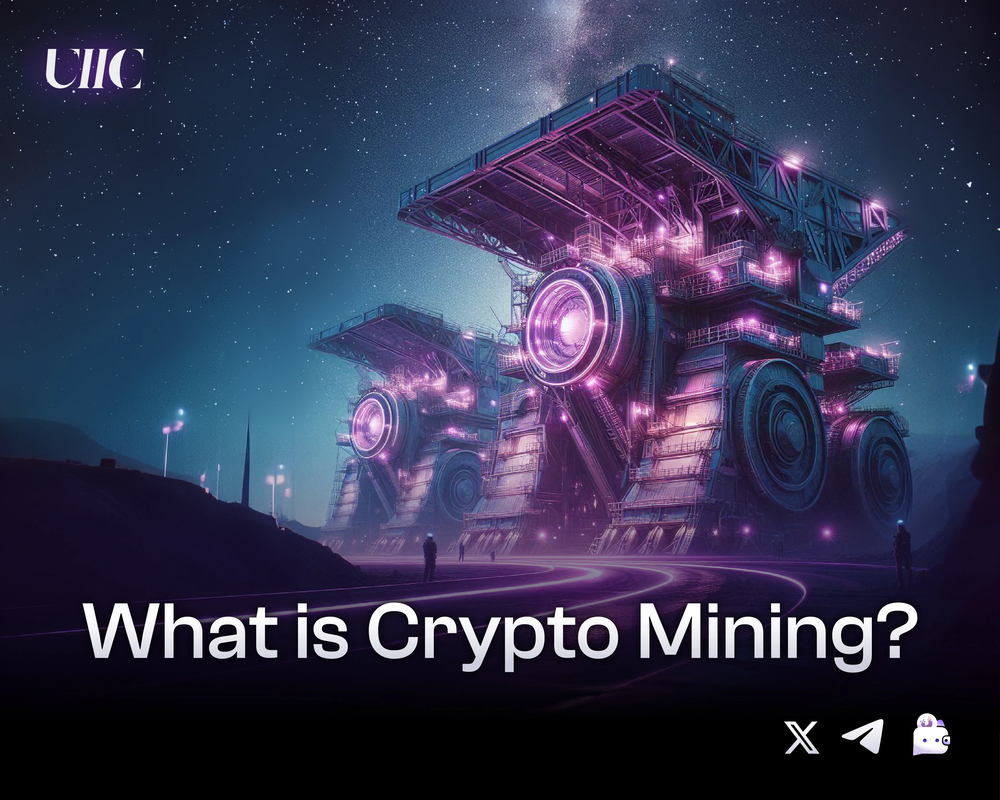What is Crypto Mining?
Crypto mining is the process of generating new coins, verifying transactions, and securing decentralized blockchain networks like Bitcoin and Ethereum.
🔍 The Basics of Crypto Mining
🔗 Blockchain Technology
Each block contains a list of verified transactions. Miners compete to solve cryptographic puzzles, and the first to succeed adds the block to the chain.
🧠 Mining Process
Miners use ASICs or GPUs to perform high-power computations. The first one to solve the puzzle gets rewarded with:
- Newly minted coins
- Transaction fees from the block
💪 Proof of Work (PoW)
Most major blockchains use PoW. It requires real computational work to prevent spam or tampering, ensuring trust without central authorities.
🔐 The Role of Mining in Crypto
✅ Transaction Verification
Mining confirms pending transactions and permanently records them in the blockchain.
🛡️ Network Security
Mining adds security by requiring massive computational power, making it hard for any single entity to dominate or alter the network.
🎁 Miner Incentives
Miners earn:
- Block rewards (new coins)
- Transaction fees
This incentivizes active participation and sustains the network.
⚠️ Challenges in Crypto Mining
⚡ Energy Consumption
PoW mining is energy-intensive, raising environmental concerns.
🏢 Centralization Risks
Large mining farms and pools can control too much power, threatening decentralization.
📜 Regulation
Mining laws vary:
- Some countries support it
- Others ban or restrict it
Miners must comply with local regulations.
🔬 Innovations in Crypto Mining
🤖 AI Integration
AI helps:
- Predict optimal mining times
- Improve profitability
- Reduce costs
🏛️ DAO-Based Mining
DAOs let communities govern mining operations collectively via smart contracts and consensus.
🔗 On-Chain Virtual Machine Mapping
Speeds up processing of transactions and smart contracts, reducing load on miners.
🌐 UIIC & The Future of Mining
💡 Web3 Innovation
UIIC (United Incubator for Innovation and Capital) leverages AI + blockchain to build the future of mining and digital asset infrastructure.
🪙 UIC Token Utility
UIC Token offers:
- Reduced fees
- Access to exclusive investment opportunities
- Voting rights
- Ecosystem rewards and liquidity
🧾 Audited for Trust
UIIC conducts regular audits to ensure platform integrity and build user trust.
🗺️ Roadmap to the Future
UIIC is committed to:
- Adopting new technologies
- Expanding services
- Leading digital asset innovation
✅ Conclusion
Crypto mining is a backbone of blockchain networks. It secures the ecosystem, rewards contributors, and powers decentralization.
With trends like AI, DAO governance, and platforms like UIIC pushing innovation, mining is becoming smarter, greener, and more inclusive.
🌐 Explore the future of crypto mining with UIIC — a trusted partner in the evolution of decentralized finance.



